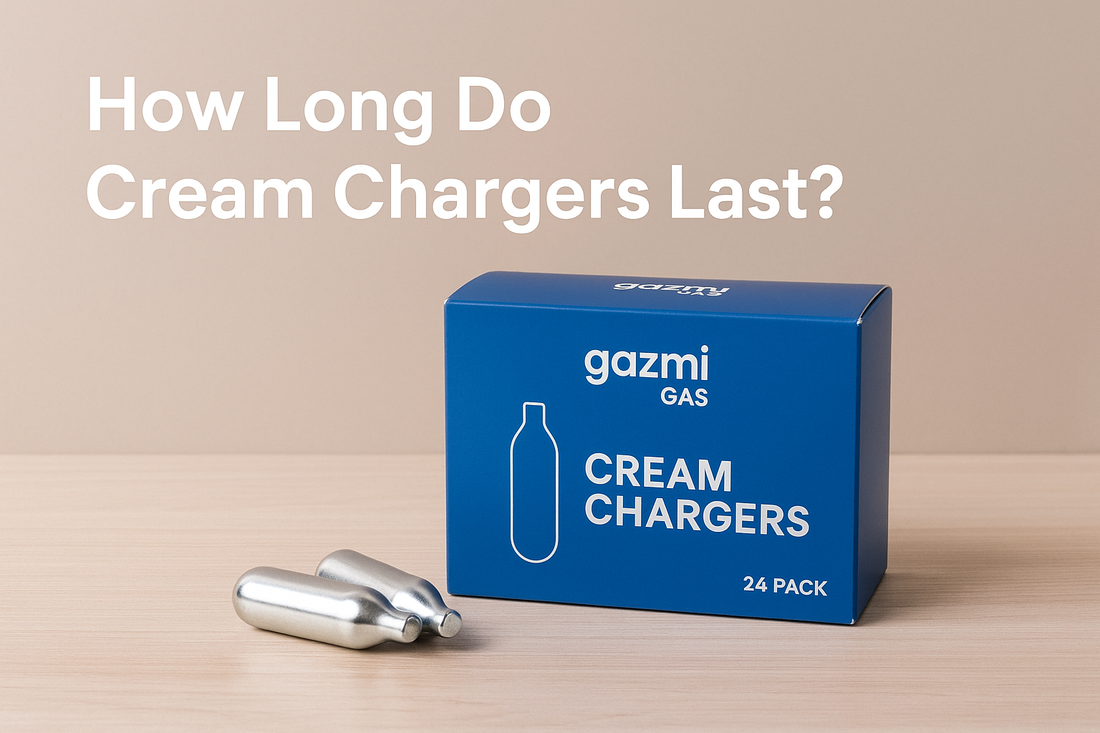
How Long Do Cream Chargers Last?
يشارك
If you’ve ever found a few chargers in your drawer and wondered whether they’re still good, this guide explains shelf life, storage, safety checks, and how to keep performance consistent over time—especially for cafés, caterers, and home bakers who want reliable whipped cream every time.
1) The Short Answer: How Long Do They Last?
Properly stored, high-quality cream chargers are generally reliable for years. While many brands do not publish a strict “expiration date,” a practical guideline is to use within ~5 years of production for the best experience. Over time, extreme heat, humidity, and surface corrosion can impact performance.
2) Storage Science: What Affects Longevity?
Cream chargers are sealed, food-contact steel cartridges filled with food-grade N₂O. Because they are pressurized, temperature swings matter:
| Environment | Impact on Performance | Recommendation |
|---|---|---|
| Cool & Dry | Least risk of pressure drift; stable results. | Ideal pantry or closed cabinet, away from steam. |
| Hot (e.g., car trunk, near ovens) | Elevated pressure; potential degradation of seals and finish over time. | Avoid sustained heat exposure; never place near open flames or heaters. |
| Humid / Damp | Encourages surface corrosion; poor handling feel; potential safety concerns if severe. | Keep in original box with desiccation; relocate to a dry cupboard. |
3) Recognizing When Not to Use a Charger
- Visible damage: deep dents, cracks, or deformed necks.
- Heavy rust or pitting: not just cosmetic discoloration.
- Abnormally light: feels significantly lighter than the rest of the batch.
- Unknown provenance: cartons stored in heat for long periods.
Note: When in doubt, do not use. Follow local guidance for recycling or safe disposal of steel cartridges.
4) Batch Codes & Rotation
Many manufacturers print a batch code or date stamp on the box or the cartridge film. Record purchase dates and use a simple “first in, first out” rotation for consistent performance.
- Group chargers by purchase date.
- Label outer cartons with month/year.
- Use older stock first in cafés or catering operations.
5) Sustainability & End-of-Life
Empty chargers are typically made of recyclable steel. Local rules vary—check municipal guidance on metal recycling. Keep cartridges away from heat sources prior to complete discharge.
6) Performance Tips for Consistent Whip
- Chill your cream & dispenser: colder inputs whip faster and hold structure longer.
- Follow manufacturer’s capacity guidance: avoid overfilling the dispenser.
- Use quality cream (30–36% fat): stabilizers optional depending on recipe and service time.
- Replace gaskets when worn: keeps sealing reliable; reduces gas loss.
What Others Are Saying
Real-world usage and community posts. (Facebook embed shown below; Instagram/Pinterest open in a new tab.)
FAQ
Do cream chargers have an expiration date?
Most don’t carry a strict “expiry.” For best results, use within ~5 years of production and store properly.
How should I store unopened chargers long-term?
Room-temperature, dry cupboards away from sunlight or heat. Keep in original packaging to reduce humidity exposure.
Is surface discoloration a problem?
Minor cosmetic marks are common on steel. Avoid using if there’s heavy rust, pitting, deep dents, or deformation.
Can I recycle empty chargers?
In many regions, yes—cartridges are steel. Always check your local recycling rules and ensure they’re fully discharged.
Content is for culinary use and general guidance. Always follow your equipment manufacturer’s instructions and local regulations.
